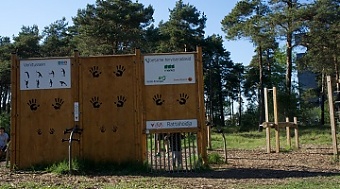Estonia, Good for Business, Health, Markets and Companies
International Internet Magazine. Baltic States news & analytics
Wednesday, 24.04.2024, 08:13
Survey: Estonia's health trails visited by 1/3 of residents
 Print version
Print version |
|---|
In addition, a quarter of the respondents said that while
they visit health trails occasionally, they are not certain about their
classification, spokespeople for the foundation told.
Founders of the Estonian Health Trails Foundation -- the
listed Estonian construction group Merko Ehitus, Swedbank and the
state-owned energy group Eesti Energia -- have contributed over 5 mln
euros since 2005 to building a network of health trails in the state and to
shaping people's mobility habits. The total investment by the state, local
governments and the EU amounts to 51 mln euros. Regularly maintained outdoor
health trails established over these 15 years number 118 and indoor trails 78.
Results of Kantar Emor's survey carried out in July show
that one-third of Estonia's residents have visited health trails, and 8 % of
this segment visit them several times per week and 9% once per week. 25% of the
respondents visit health trails a few times per month, 15% once per month and
30% at least once per six months.
Rait Pallo, chairman of the supervisory board of the
Health Trails Foundation, said that there is much room for improvement in terms
of new health trail users and regularity of exercise.
"If we compare the number of healthy life years of
Estonian people with the results of other European states, it appears that
Estonian people's health is among the poorest in Europe. The average number of
healthy life years for an Estonian man is 52.7, whereas that for a Swedish man,
who is among the healthiest in Europe, is 73.7 years -- the difference is 21
years," Pallo said.
The low share of healthy life years significantly increases
health care costs, he noted. Even though the average age of Estonians is
exhibiting an upward trend, it must be noted that while the number of life
years increases, it does not mean that Estonian people live them actively.
Pallo said that the Estonian Health Trails Foundation aims
to boost the number of heath trail users by at least one-third over the coming
three years and increase Estonian people's number of healthy life years -- an
ambitious goal that also requires a contribution from the society, individuals
and the state.
Participants in Kantar Emor's study numbered 1,219
and the results thereof show that people mainly visit health trails for the
purpose of moving in fresh air, which was mentioned by two-thirds of the
respondents who had visited health trails. Other reasons also included
discovering new locations, enjoying the benefits of exercise and taking a break
from everyday routine. Keeping in shape and improving one's health is important
to close to one-fourth of the respondents, particularly those aged below 24 and
over 75.
The combined length of health trails that can be used throughout
the year in Estonia is over 1,100 kilometers. The trails are maintained by a
200-strong team either on a voluntary basis or in cooperation with local
governments. A total of 78 indoor health trails in numerous buildings, such as
schools, offices, kindergartens and hospitals, are daily used by over 70,000
people.
- 28.01.2022 BONO aims at a billion!
- 13.02.2021 Моя жизнь в газете. Очерки по новейшей истории Латвии. Глава 1
- 30.12.2020 Накануне 25-летия Балтийский курс/The Baltic Course уходит с рынка деловых СМИ
- 30.12.2020 On the verge of its 25th anniversary, The Baltic Course leaves business media market
- 30.12.2020 Business Education Plus предлагает анонсы бизнес-обучений в январе-феврале 2021 года
- 30.12.2020 EU to buy additional 100 mln doses of coronavirus vaccine
- 30.12.2020 ЕС закупит 100 млн. дополнительных доз вакцины Biontech и Pfizer
- 29.12.2020 Linde Gas открывает завод в Кедайняйской СЭЗ
- 29.12.2020 Number of new companies registered in Estonia up in 2020
- 29.12.2020 18-19 января Наталия Сафонова проводит семинар "Управленческий учет во власти собственника"








 «The Baltic Course» Is Sold and Stays in Business!
«The Baltic Course» Is Sold and Stays in Business!

